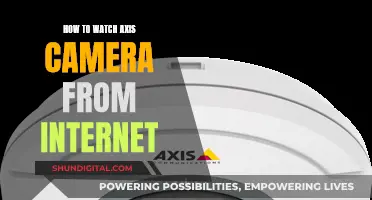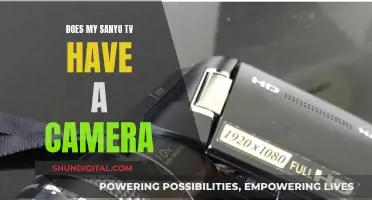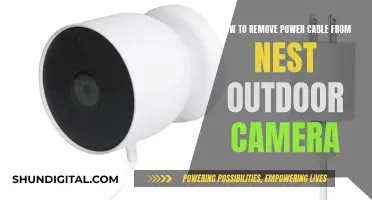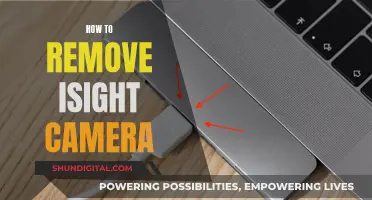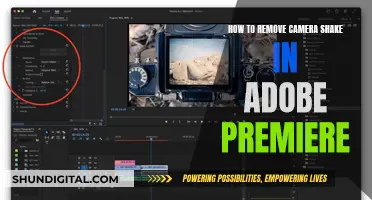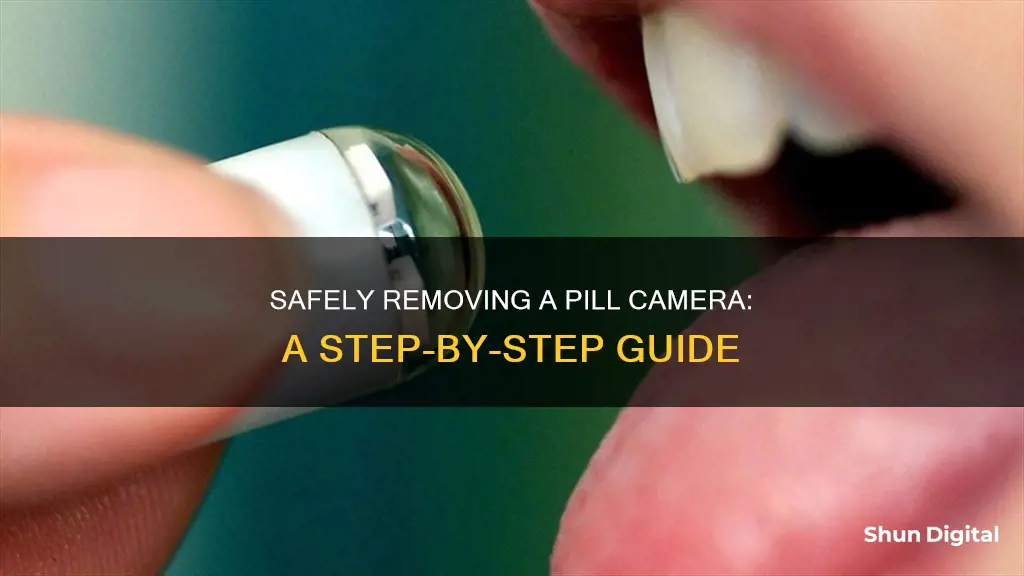
Capsule endoscopy is a procedure that allows doctors to examine a patient's gastrointestinal tract. The patient swallows a tiny capsule containing a camera, which captures images of their digestive tract as it passes through their body. This procedure is often used to diagnose problems in the small bowel, which can be difficult to access using traditional endoscopes. While capsule endoscopy is generally safe, there is a small risk of the capsule becoming stuck in the gastrointestinal tract, which may require surgical removal.
| Characteristics | Values |
|---|---|
| Capsule endoscopy procedure | A small capsule with a camera is swallowed by the patient |
| Capsule endoscopy purpose | To diagnose problems in the digestive system |
| Capsule endoscopy preparation | Clear liquid diet, laxatives, fasting |
| Capsule endoscopy duration | 8 hours or until it passes out of the body |
| Capsule endoscopy risks | Capsule retention, abdominal pain, bloating, nausea, vomiting, fever, chest pain, difficulty swallowing |
| Capsule endoscopy cost | $580 - $2,500 |
| Capsule endoscopy removal | Surgery or endoscopy if capsule retention occurs |
What You'll Learn

Surgical removal
The surgical procedure for removing a pill camera involves making an incision in the abdomen, usually through the umbilicus. A pneumoperitoneum is created, and a laparoscope is inserted to locate the capsule and the stricture or obstruction causing it to be stuck. The affected portion of the small bowel is then exteriorised and resected. The ends of the small bowel are then reconnected using an end-to-end anastomosis technique, and the abdomen is closed.
In some cases, a single incision laparoscopic surgery (SILS) may be performed for capsule removal. This technique involves making a single laparoscopic incision, reducing the risk of organ injury, hemorrhage, and postoperative adhesions. The procedure may need to be converted to a laparotomy or additional ports may need to be added if technical difficulties arise during SILS.
To prevent the need for surgical removal, patients may be given a patency capsule to swallow before the procedure. If this capsule, which is designed to test the risk of retention, gets stuck, it will dissolve and not be passed. Additionally, imaging techniques such as CT scans or MRI scans can be used to check for narrowing in the GI tract before the procedure. Corticosteroids may also be administered to reduce inflammation in the GI tract.
Stream Setup: Viewing Your Camera Feed While Broadcasting
You may want to see also

Endoscopic removal
Capsule endoscopy is a procedure that allows a doctor to look inside a patient's gastrointestinal tract. It is a type of endoscopy done using a wireless camera that fits inside a tiny, disposable capsule. The capsule is easily swallowable and can be used to view the entire gastrointestinal tract, although it is most commonly used to view the small intestine.
Capsule retention is a well-known and significant complication of capsule endoscopy. It occurs when the capsule remains in the digestive tract for at least two weeks or requires medical, endoscopic, or surgical intervention for removal. Capsule retention can be caused by underlying gastrointestinal conditions such as inflammatory bowel disease, previous surgery or injury, or strictures in the small intestine.
If a capsule endoscope is retained, surgical or endoscopic removal is required. Endoscopic retrieval can be attempted using the push-and-pull enteroscopy technique with a double-balloon enteroscope. However, subsequent surgical retrieval may still be necessary due to the underlying pathology.
- Patient Preparation: Ensure the patient is adequately prepared for the procedure. This includes clearing their gastrointestinal tract with a laxative and abstaining from eating or drinking for 10 to 12 hours beforehand.
- Anesthesia: Administer general anesthesia to the patient to ensure comfort during the procedure.
- Incision: Make a small incision in the umbilicus (belly button). This provides access to the abdominal cavity.
- Port Insertion: Insert the appropriate ports through the incision. This includes a camera port and trocars (thin, tube-like surgical instruments).
- Pneumoperitoneum: Create a pneumoperitoneum by introducing gas into the abdominal cavity to create more space to work.
- Laparoscopy: Insert a laparoscope (a thin, lighted tube with a camera) through one of the ports to visualize the abdominal cavity and locate the retained capsule.
- Capsule Retrieval: Using the laparoscope and surgical instruments, carefully retrieve the retained capsule. This may involve manipulating the capsule and surrounding tissues to dislodge it from its position.
- Closure: Once the capsule is retrieved, remove the ports and close the incision.
It is important to note that the specific details of the procedure may vary depending on the patient's condition and the location of the retained capsule. Additionally, in some cases, surgical retrieval may be necessary if endoscopic removal is unsuccessful or if there are underlying pathologies that require surgical intervention.
Amazon's Employee Surveillance: Cameras in the Workplace?
You may want to see also

Capsule retention
If capsule retention is suspected, an abdominal X-ray is the preferred test to confirm it. An abdominal CT scan may also be performed if the precise location of the retained capsule is necessary or clinically indicated. In some cases, ultrasound may also be used to identify the capsule.
The first step in managing capsule retention is a watchful monitoring approach, as some patients may naturally excrete the capsule after more than 15 days without any therapy. Medical therapy, such as steroids in inflammatory bowel disease patients, may also facilitate capsule excretion. However, if the capsule remains in the body for an extended period, surgical or endoscopic removal may be necessary. Surgical retrieval is often required, especially if there is underlying pathology causing the obstruction. Endoscopic retrieval techniques, such as double-balloon enteroscopy, have also been successful in retrieving retained capsules.
To prevent capsule retention, a patency capsule or dedicated small bowel cross-sectional imaging techniques, such as CT enterography/enteroclysis or magnetic resonance enterography/enteroclysis, may be used. These techniques can help identify patients at high risk of capsule retention and allow for appropriate management to prevent potential complications.
Where is the Camera on My Smart TV?
You may want to see also

Capsule endoscopy procedure
Capsule endoscopy is a non-invasive diagnostic procedure that uses a small capsule containing a camera to take images of the inside of a patient's digestive tract. The capsule is about the size of a large vitamin pill and is easy to swallow. It is often used to examine the small intestine, which can be difficult to access with traditional endoscopes.
Preparation
Before the procedure, patients may be asked to:
- Stick to a clear liquid diet the day before.
- Take a laxative to clear their bowels.
- Fast for 10 to 12 hours before the procedure.
- Stop smoking 24 hours before.
- Shave an area on their belly or chest for the sensors.
- Disclose all medications they are taking.
- Wear loose-fitting clothes on the day of the procedure.
During the procedure
The procedure itself involves the following steps:
- Sensors are attached to the patient's chest and belly using a gentle adhesive, or a sensor belt is placed around their waist.
- A recorder is attached to a belt and worn around the patient's waist.
- The patient swallows the capsule, usually with a sip of water.
- The patient waits at least two hours before drinking clear liquids and at least four hours before eating.
- The patient avoids strenuous activity and sudden movements.
- The patient keeps the recording device dry by avoiding bathing or swimming.
- The capsule passes out of the body through a bowel movement.
After the procedure
After the capsule has been swallowed, patients can usually go home and resume their daily activities. The procedure is complete after eight hours or when the capsule passes out of the body. Patients then return to their doctor to return the recording device and remove the electrodes. The doctor will then download and review the images taken by the camera.
Risks
Capsule endoscopy is generally a safe and simple procedure. However, there is a small risk of the capsule becoming lodged in the patient's gastrointestinal tract, which may require surgical or endoscopic removal. Patients should contact their doctor if they experience any of the following symptoms after the procedure:
- Abdominal pain
- Bloating
- Nausea or vomiting
- Fever
- Chest pain
- Difficulty swallowing
Grocery Store Security: Live Camera Access Explained
You may want to see also

Capsule endoscopy preparation
Capsule endoscopy is a procedure that allows your doctor to examine your gastrointestinal tract. It involves swallowing a tiny capsule containing a disposable wireless camera that captures images of the digestive tract. The images are transmitted to a recorder worn outside the body. This non-invasive procedure can help diagnose various gastrointestinal conditions.
One Week Before Capsule Endoscopy:
- Notify the nursing staff about any significant health or medication changes.
- Pick up the prescribed bowel preparation kit from your pharmacy.
- Purchase Simethicone (Gas Ex) Chewable tablets to reduce gas during the procedure.
- Avoid iron pills, vitamins with iron, seeds, nuts, tomatoes, berries, and multigrain breads.
One Day Before Capsule Endoscopy:
- Refrain from using tobacco products for 24 hours before the test.
- Start a clear liquid diet after lunch. Avoid solid foods, red or purple liquids, chewing gum, and alcohol.
- Do not consume any liquids after 10:00 pm, except for a sip of water to take regular evening medications.
- Drink 500 ml (16 oz) of bowel prep solution around 6:00 pm to clear your gastrointestinal tract.
- After drinking half of the prep solution, drink two 240 ml (8 oz) glasses of water.
- Nausea is common while drinking the prep solution, so take breaks and walk around if needed.
- Expect bowel movements within 3 hours of starting the prep, and stay near a restroom.
- If you are diabetic, take half the dose of your medication the day before the procedure, and skip the dose on the day of the test.
Day of Capsule Endoscopy:
- Do not eat or drink anything, including candy or chewing gum, before the test.
- Chew two Simethicone (Gas Ex) tablets in the morning to reduce gas during the procedure. Do not take any other medications.
- Wear comfortable, loose-fitting, two-piece clothing to accommodate the recording device.
- Arrive on time at the designated location with completed paperwork, photo ID, and insurance card.
After Ingesting the Capsule:
- Do not eat or drink anything for at least two hours after ingesting the capsule.
- After two hours, you may start consuming clear liquids, sports drinks, broth, popsicles, hard candy, and tea or coffee without milk or cream.
- Avoid strenuous activities, bending, and sudden movements during the testing period, which typically lasts about eight hours.
- Stay away from powerful electromagnetic fields, such as MRI machines or amateur (HAM) radios, until the capsule is excreted.
- Confirm every 15 minutes that the small green/blue light on the recorder is blinking.
- Record the time and nature of any events, such as eating, drinking, or unusual sensations, and bring these notes when returning the equipment.
- Contact your doctor if you experience abdominal pain, nausea, vomiting, or other concerning symptoms.
After Completing Capsule Endoscopy:
- Return all the equipment as instructed.
- Contact your doctor if you cannot verify the excretion of the capsule or if you experience unexplained abdominal pain or vomiting.
- The capsule should pass within a few days. If it doesn't, inform your doctor, as it may need to be surgically removed.
Hacking Area 51: Accessing the Camera Feeds
You may want to see also
Frequently asked questions
Contact your healthcare provider right away. You may need to have an X-ray to determine if the pill camera is still in your body, and if so, it will need to be surgically removed.
If you experience abdominal pain, bloating, nausea, vomiting, fever, chest pain, or difficulty swallowing, contact your doctor immediately.
The removal procedure will depend on the specific situation, but it may involve surgery or endoscopy. In some cases, medication may be prescribed to help expel the pill camera.
Yes, there is a risk of internal injury if the pill camera is stuck in a stricture or diverticulum in the intestine.


